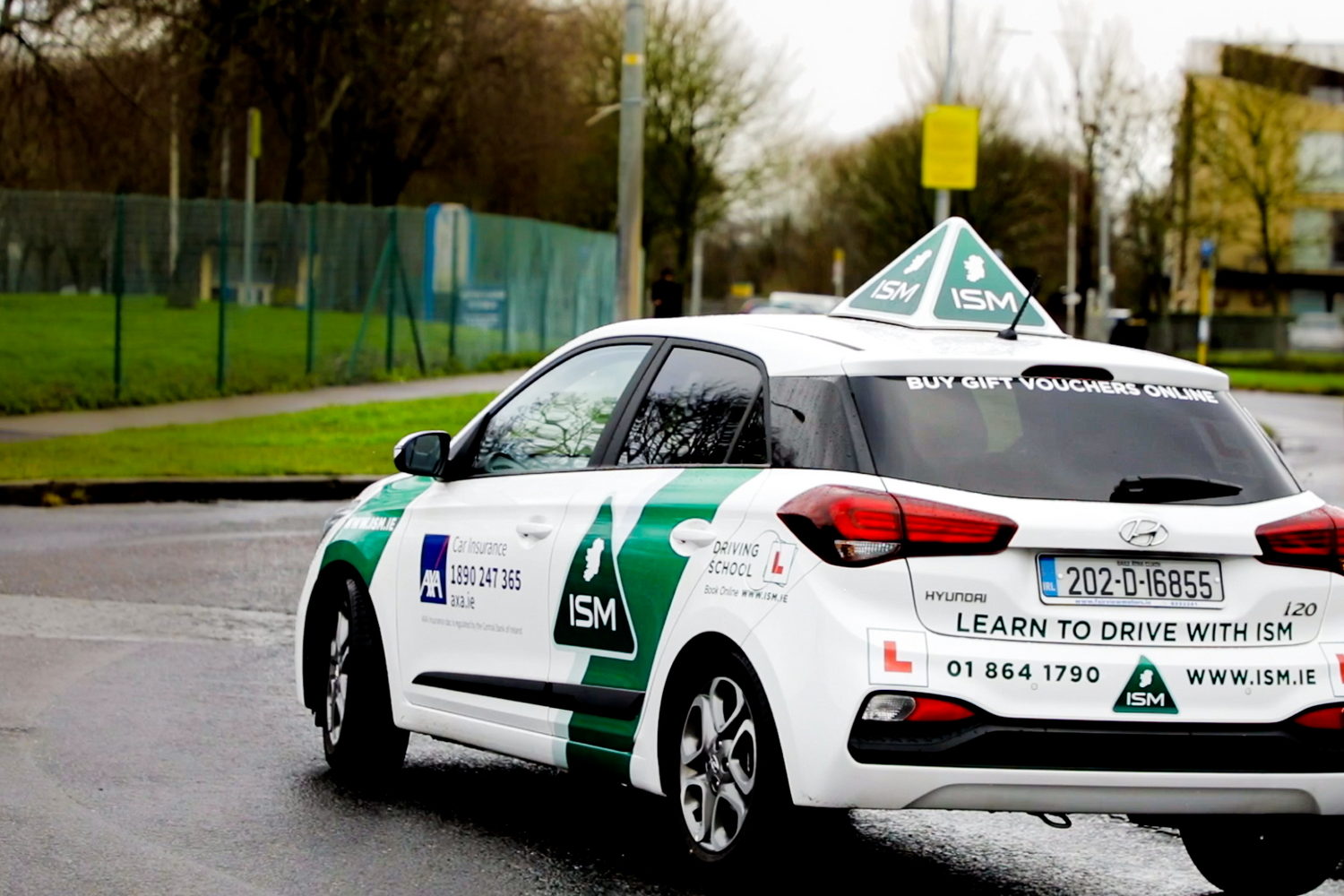Note: This article was written as part of a commercial content partnership between CompleteCar.ie and ISM.
Obviously, this is where it's all been leading. Passing the theory test. Getting your first learner's permit. Ploughing through your EDT driving lessons. It's always a benefit to get insured on a car at home so you can practise what your driving instructor has been teaching you. Once you complete 12 lessons with ISM, AXA will discount your insurance by up to €400 if you take out your own policy or 50 per cent off the additional premium (up to €400) as a named driver.
Now for taking your driving test.
The first thing to do is not panic. Sitting any exam or test is always sure to get the blood pumping, but you're going to be fine. After all, if you've gotten this far, you've already passed a lot of the hurdles, and now only the practical driving test remains.
First off, you need to get your test booked. As with pretty much all parts of life at the moment, in this post-Covid era, getting a test date can be tricky, as there are still delays and still a shortage of driving testers. It helps if you can be flexible as to your testing location, but obviously that needs to be balanced against how well (or otherwise) you know the roads in any other area, and whether your usual licenced accompanying driver can travel there with you.
The booking process should be relatively simple, though. First off, you need to set up an account at MyRoadSafety and from there you can access the test booking system. You can also apply by post, but phone or email bookings are not taken.
If you're booking online (and most will) you fill in your details and then you simply have to wait for an email inviting you to make your booking. Remember, you'll have to have held your learner's permit for at least six months before applying.
Once you receive the invitation email, you'll have ten days to make your test date booking, or you can go back to the invitation queue if you feel that you're not quite ready yet. The tests costs €85.
There is such a thing as requesting an emergency test, but that's strictly reserved for anyone employed by the HSE, a private hospital or the emergency services and who needs to drive as part of their job.
While you're waiting, get some study time in. Go over the rules of the road again, and make sure you take some extra lessons - over and above your minimum 12 - to help you to become a safe and competent driver. Irish School of Motoring (ISM) offers 'pre-test booster' lessons, with four lessons priced at €185 that should help you prep properly.
To help make sure you're hitting the right marks ahead of your test, the RSA provides a couple of helpful publications including a 'Preparing For Your Driving Test' and 'Checklist For Your Practical Driving Test'. These are both free to download and are extremely useful.
It's obviously a good idea to try and familiarise yourself, as far as it's practical to do so, with the roads near and around the driving test centre - there are 50 of them, dotted around the country. Make a note of any tricky junctions, or awkward lane layouts. If these are saved in your memory, you can concentrate more on the driving and less on where the road's going.
When it comes to the actual day of the test, you need to make sure that your car is in full roadworthy condition, and it's no bad idea to give it a clean inside and out, to make sure that all the windows and lights are unobstructed, and there are fewer distractions inside. If you have any little decorations or anything hanging from the rear-view mirror, take them out now. Check your tyres for pressure and tread depth (you can't take the test if one of your tyres is a space-saver) and make sure your windscreen washers are topped up, and your wipers are in good condition. The driving tester will check that your lights and indicators are all working, so do check this before your test. Remember that you have to provide the vehicle for the test. This can be your own car, your parent's car, or your driving instructor's car in some cases, but you cannot bring a rental car.
Make sure your insurance and tax are up to date, and that you have your L plates correctly displayed, as well as a valid NCT disc if your car is more than four years old. You also need to organise to have your sponsor, or another suitable fully-licenced driver, accompany you to and from your test.
Remember to wear suitable footwear, and bring your glasses or contact lenses if you need them, and remember to bring your learner's permit with you, too.
So finally - preparation is key, all those driving lessons and pre-test lessons will stand to you and hopefully you'll pass your test first time. That's pretty much it. You're ready. You've got this. Go do it. You'll be fine.
Assuming you do pass, you'll be given a Certificate of Competency, with which you can go back to the National Driver Licence Service (NDLS) and convert your learner's permit into a full licence, which will need to be renewed at ten-year intervals.
Further reading
Getting on the road: an overview of the process
Getting on the road: Taking - and passing - your driver theory test
Getting on the road: How to apply for your learner permit
Getting on the road: Your essential driver training
> Getting on the road: Taking the driving test
Getting on the road: Now you've passed your test


